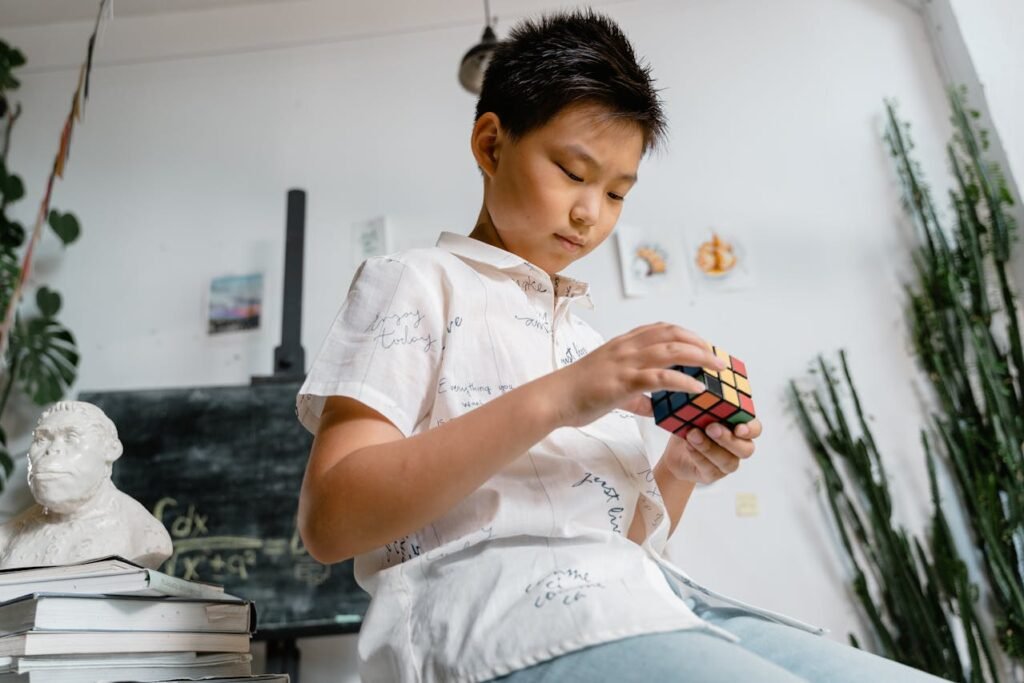When a child plays, it might look like just fun and games. They run, build, laugh, and pretend. But deep inside their brain, something amazing is happening.
Play is not just a way to pass time. It’s one of the most powerful tools for learning. When children play, they are growing their brain. They are learning how to think, how to solve problems, how to work with others, and how to understand the world.
In this article, we’ll explore how play helps the brain grow — and why it’s just as important as reading, writing, or math. Whether your child is five or fifteen, play can shape how they learn, how they feel, and who they become.
What Happens in the Brain During Play?
When a child plays, their brain becomes very active — even if they’re just stacking blocks, pretending to be a doctor, or chasing a ball. Play lights up many parts of the brain all at once. And when more parts of the brain work together, learning becomes stronger and faster.
Play Builds Brain Connections
Inside every brain are billions of cells called neurons. These cells talk to each other by sending messages back and forth. Every time a child plays, those neurons create new paths and connections. The more they use these paths, the stronger they become.
This is how children learn. It’s not just about listening to a teacher or reading a book. It’s also about doing, trying, and playing.
For example:
- When a child builds with blocks, they learn about balance, shape, and space.
- When they play tag, they learn about speed, movement, and self-control.
- When they pretend to be a superhero or a shopkeeper, they learn about language, emotions, and social rules.
In each case, the brain is learning in a deep, lasting way.
Play Helps With Focus and Self-Control
You might think play is wild and silly — and sometimes it is. But many types of play help children practice focus, patience, and control. Board games teach them to wait their turn. Building toys teach them to stick with a challenge. Pretend play helps them plan, think ahead, and follow a storyline.
These small moments build a child’s ability to control their actions and thoughts — a skill called executive function. It’s one of the most important things the brain needs for school, work, and life.
Emotions and Learning Go Hand in Hand
When kids play, they often feel excited, happy, and connected. And that matters. Because when children feel safe and joyful, their brain is more open to learning.
Strong emotions — especially positive ones — help the brain remember better. That’s why a lesson that feels like play often sticks longer than one that feels like pressure.
Play also helps children handle big feelings. When they act out a sad story, take turns being the “bad guy,” or build something after a hard day, they’re learning how to deal with emotions. This helps them stay calm, bounce back, and feel stronger.
The Different Kinds of Play — And What They Teach
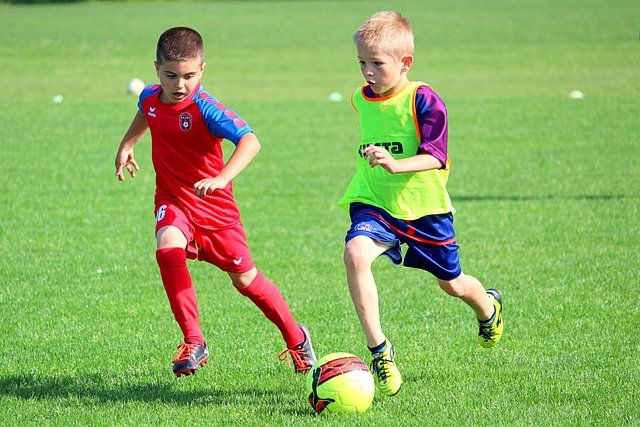
Not all play looks the same. Some kids play loudly, some quietly. Some play with others, while some play alone. But no matter what it looks like, all types of play help the brain grow — in different, beautiful ways.
Physical Play Builds Brain and Body Together
Running, jumping, climbing, dancing — these kinds of play don’t just make children strong. They help with balance, coordination, and body awareness. But more than that, they help the brain learn how to plan actions, make quick decisions, and stay focused.
For example, when kids play a game of tag, they’re not just moving — they’re thinking fast. “Should I run this way or that way?” “Where is the safe zone?” This kind of quick thinking helps with focus and flexibility.
Physical play also burns energy and reduces stress. A relaxed, calm body supports a brain that can think more clearly.
Pretend Play Grows Imagination and Language
When children play make-believe — pretending to be a doctor, a chef, or a dinosaur — they are building some of the brain’s most important skills.
Pretend play teaches:
- Storytelling: They create plots, characters, and problems to solve.
- Language: They talk, listen, and explain their ideas.
- Empathy: They step into someone else’s shoes and imagine how others feel.
These are deep thinking skills. And they don’t grow through drills or lectures — they grow through play.
Creative Play Unlocks Problem-Solving
Drawing, painting, building with blocks, making crafts — these playful activities teach children how to try, fail, fix, and try again. When they don’t know how to finish something, their brain learns how to explore, imagine, and solve problems.
Creative play also builds focus. A child might sit for a full hour making something out of paper or building a tiny world. That kind of quiet concentration helps them in school, too.
Social Play Builds Communication and Confidence
Playing with others — taking turns, sharing toys, solving problems — builds social skills in real-time. Kids learn how to express ideas, listen, cooperate, and handle conflict.
Social play helps the brain understand how people work together. It’s not always easy, but each moment of teamwork or disagreement is a chance to learn.
Why Play Matters at Every Age
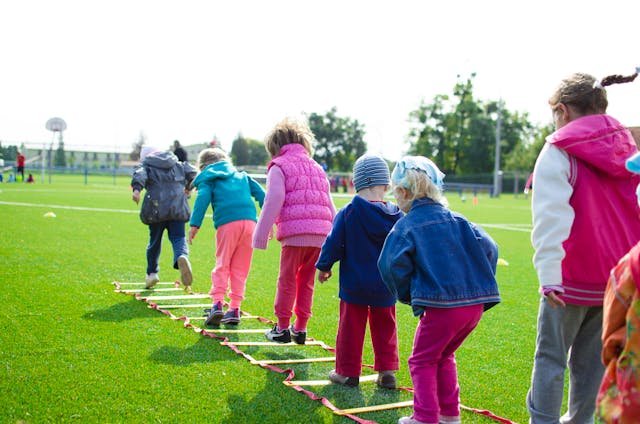
Sometimes people think play is only for little kids. But that’s not true. The way children play might change as they grow older, but the brain still benefits just as much — even into the teen years.
Ages 5 to 8: Building the Basics
In these early school years, play helps children learn how to follow rules, solve problems, and use their imagination more fully. They’re learning how the world works, and play is how they test those ideas.
Whether it’s building a Lego house, playing house, or making up a new game with friends, their brain is making strong connections. They are learning to plan, work with others, and see things from different angles.
At this stage, the brain is growing very fast. Play gives it the chance to stretch, practice, and grow safely.
Ages 9 to 12: Deeper Thinking and More Complex Play
Now children begin to enjoy games with more rules and longer challenges — like board games, sports, or creative projects that take days. They start asking more “what if” questions and enjoy creating things that reflect their personality and ideas.
Play during this age helps the brain practice logical thinking, strategy, and planning. They’re also learning to handle winning and losing with more balance, which builds emotional strength.
Even activities like acting out stories or building video games can stretch their brain in wonderful ways.
Teens: Play Becomes Discovery and Expression
Teenagers might not call it “play,” but they still need time to create, explore, and relax in playful ways. Whether it’s coding a game, writing a story, filming videos, skateboarding, or painting, these activities help their brain manage stress and build identity.
Their brains are learning how to think for themselves, make choices, and handle emotions. Play gives them a safe way to explore who they are and what they care about.
When teens stop playing completely — and life becomes all pressure and no joy — their brain can start to shut down from stress. That’s why playful learning is just as important now as it was when they were small.
What Happens When Children Don’t Get Enough Play?
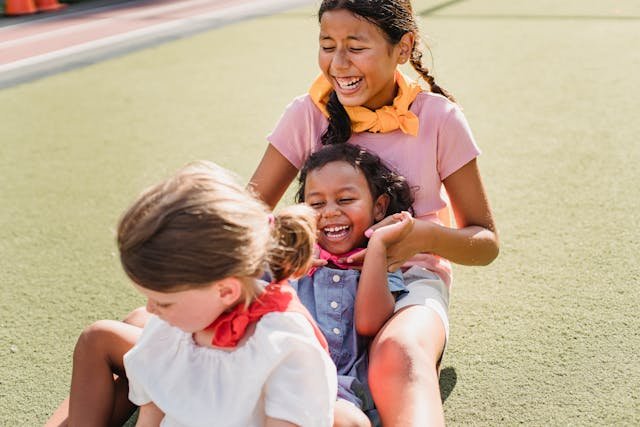
Many children today have very full schedules — school, homework, classes, and more. Sometimes, there’s not much time left for play. But when play is missing, the brain misses out too.
Less Play Can Lead to More Stress
When kids don’t get enough time to relax and enjoy playful moments, their brains stay in “work mode” all day. This can lead to stress, frustration, and burnout — even in young children.
Play helps release stress and gives the brain a chance to rest and reset. Without it, children may struggle more with focus, sleep, and mood.
Thinking and Creativity Can Slow Down
Play is not a break from learning. It’s a big part of learning. When play is pushed aside, kids miss chances to ask questions, test ideas, and try new things.
Without time to explore freely, they may become less curious. They may stop asking “what if” or “why.” Over time, this can make learning feel boring, and their brain stops growing as quickly.
Social Skills Don’t Grow the Same Way
Many social skills — like teamwork, kindness, and solving problems with others — are best learned through play. When kids play together, they practice real-life situations in safe ways. They learn how to lead, follow, share, and speak up.
If this kind of play is missing, children may feel more awkward with others. They might avoid group work or have trouble handling disagreements and conflicts. These are skills they need for school, friendships, and life — and play is where they start.
Confidence Can Shrink
Play gives children the chance to feel strong and in control. They can try things their way, fix mistakes, and feel proud of what they create. This builds real, deep confidence.
When that chance is taken away — when every moment is structured or judged — children may begin to doubt themselves. They might become afraid of mistakes or less willing to try.
That’s why unstructured play, where kids lead the way, is so important for confidence and growth.
The Science Behind Why Play Grows the Brain
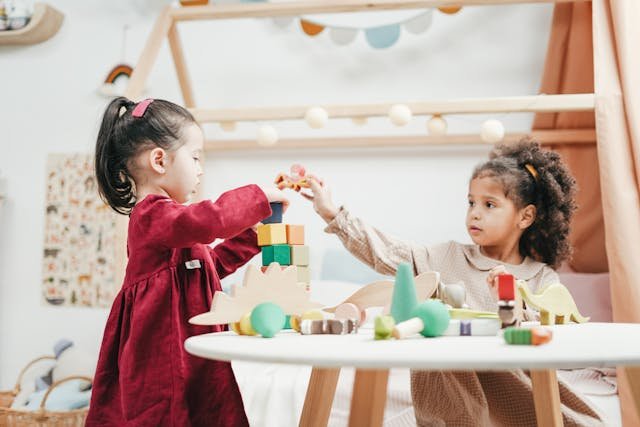
You might be wondering — how exactly does play help the brain grow? Is there actual science behind it, or is it just something people say?
The truth is, researchers and child development experts around the world agree: play changes the brain. And it does this in real, physical ways.
Play Builds Neural Pathways
Inside a child’s brain are billions of cells called neurons. These neurons talk to each other through tiny connections called synapses. Every time a child plays, they’re building new pathways between these brain cells.
The more they use those paths — by repeating actions, solving problems, or practicing skills — the stronger those connections become. Stronger connections mean quicker thinking, better memory, and deeper understanding.
So when a child plays with blocks, pretends to be a chef, or creates a game, they’re not just “having fun.” Their brain is building itself — connection by connection.
Play Activates the Whole Brain
Learning is strongest when multiple parts of the brain work together. And play does exactly that.
- Physical play (like running or dancing) activates the motor cortex.
- Pretend play lights up the prefrontal cortex (thinking and planning) and the limbic system (emotion and memory).
- Problem-solving games use the frontal lobe (decision making).
- Talking during play lights up the language areas.
When a child is playing, their whole brain is active — not just one small part. This makes learning stronger, faster, and more lasting.
Play Releases Brain-Growth Chemicals
Play also triggers the release of special brain chemicals:
- Dopamine, which makes children feel happy and alert.
- Oxytocin, which builds trust and bonding, especially during social play.
- Endorphins, which reduce stress and make learning feel safe and fun.
These brain chemicals help the child stay motivated and emotionally balanced. When learning feels joyful, children want to keep going — and that keeps their brain growing.
How to Create a Brain-Boosting Play Environment at Home
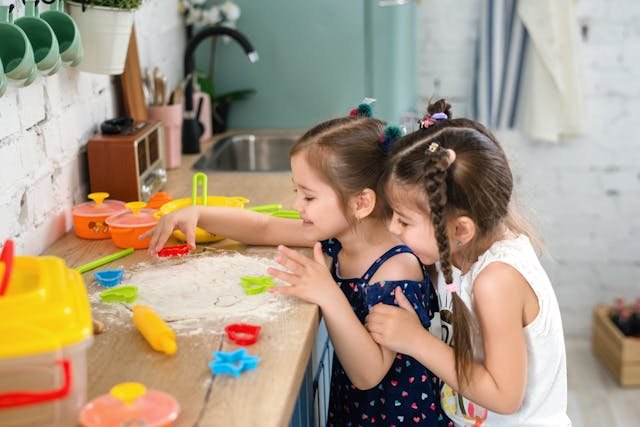
You don’t need a big house, fancy toys, or lots of free time to give your child the brain benefits of play. What children need most is space to think, freedom to try, and a caring adult who believes in the power of play.
Here’s how you can support powerful play — right from your living room.
Give Time, Not Just Toys
One of the most important things you can give your child is unhurried time. Children need open time to explore, create, or simply imagine. They don’t need to be told what to play or how to do it. Let them lead the way.
Even just 20–30 minutes a day of free play (without screens or tight rules) gives the brain space to grow.
If your child says, “I’m bored,” that’s okay. Boredom often leads to the most creative kinds of play. It gives the brain a chance to invent.
Keep Play Materials Simple
You don’t need the newest toys. In fact, research shows that simple toys and everyday items often spark the best kind of learning.
Cardboard boxes become rocket ships. Blankets become castles. A pile of sticks becomes a building site. These kinds of open-ended materials let your child imagine, build, and explore — all of which grow their brain.
Think about including:
- Blocks or stacking items
- Art supplies (paper, crayons, glue)
- Dress-up clothes or old scarves
- Puzzles, board games, or storytelling cards
The less a toy “does” on its own, the more the child’s brain has to do — and that’s where the magic happens.
Make Room for Mess
Play is not always tidy. But mess often means learning is happening. When children build forts, mix paint, or invent their own games, they’re making decisions, solving problems, and practicing control.
Try to say yes more often than no. “Yes, you can build that.” “Yes, let’s see what happens if you try.” “Yes, I’d love to see what you made.”
That one word — yes — helps children feel safe to try, and the brain grows best when it’s not afraid.
Join In, But Don’t Take Over
Children love when adults play with them. But they also need room to lead. If your child is pretending to be the teacher, let them teach. If they’re building a story, let them be the director.
Your role? Be present. Be curious. Follow their lead. Ask open questions like, “What happens next?” or “How did you come up with that idea?” These keep the play going — and stretch their thinking.
How Play Prepares Kids for School — and for Life
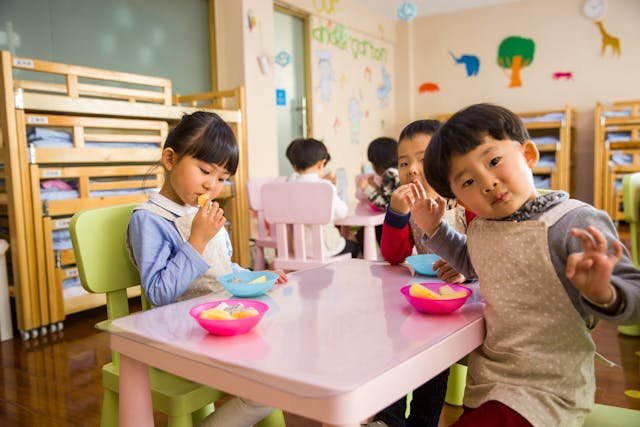
When we hear the word “play,” we often think of toys, laughter, and maybe a little mess. But for children, play is so much more than fun. It’s a deep form of learning that shapes how they think, how they feel, and how they behave — both in the classroom and in life.
Play is the practice ground where kids learn to be learners. It sets the stage for success in school, and plants the seeds for skills they’ll carry into adulthood.
Play Builds School-Ready Brains
Before children can learn to read or solve math problems, they need to build the thinking skills that make learning possible. These are sometimes called executive function skills — and play is where they grow best.
For example:
- A child playing hide and seek is practicing memory and focus.
- A child building a tall tower is learning planning and trial-and-error thinking.
- A child acting out a story is building language and self-expression.
- A child playing with others is practicing patience, turn-taking, and teamwork.
When children enter school, those who have had rich, playful experiences often find it easier to pay attention, follow instructions, manage their emotions, and stay with a task. These skills help them not just survive school — but enjoy it.
Play Encourages a Love of Learning
Children who play freely develop a natural curiosity. They learn to ask questions like:
- “What happens if I do this?”
- “How can I fix this?”
- “Why did that happen?”
These are the same kinds of questions that fuel great learning in science, reading, history, and more.
Play builds confidence because it gives kids a chance to lead, explore, and discover in their own way. When they figure something out on their own — even something small — their brain lights up with pride. This feeling of success makes them want to learn more. It creates a positive loop that keeps learning joyful.
Play Strengthens Real-Life Problem Solving
The world is full of small (and big) problems to solve. How do I zip my jacket? What do I do if my friend is sad? How can I make this toy work again?
During play, kids face tiny challenges that help them practice for real life. They learn to make choices, fix mistakes, handle frustration, and try again. These are not just learning skills — they are life skills.
And unlike worksheets or tests, play allows kids to try out solutions without fear. If something doesn’t work, that’s okay — they just try a different way. This kind of safe failure builds courage, creativity, and perseverance.
Play Prepares Kids for the Future
As kids grow, the world around them changes fast. Technology, jobs, and global problems will all look different when today’s children become adults. But the skills they’ll need — creativity, communication, problem-solving, emotional strength — are already being shaped during play.
Think of it like this:
- A child building a fort is learning engineering.
- A child creating a game with friends is learning leadership and teamwork.
- A child pretending to be a shop owner is learning math, communication, and empathy.
These moments may seem simple. But together, they build a mind that’s ready to face the future — with curiosity, courage, and kindness.
How Debsie Uses Play to Grow Smarter Kids
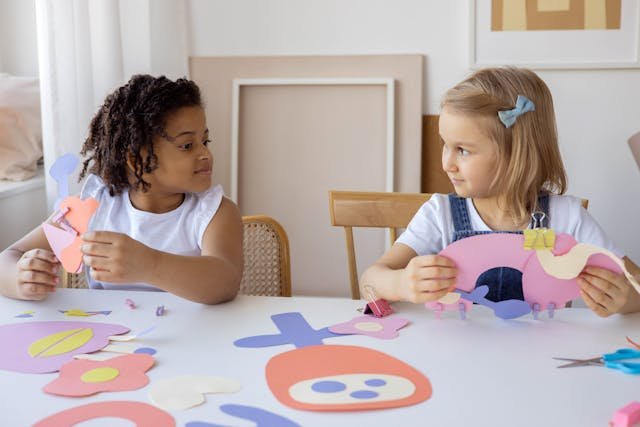
At Debsie, we believe learning should be joyful — not stressful. That’s why play is part of everything we do. We don’t see play and learning as separate. To us, play is learning — and it’s one of the most powerful ways to help a child’s brain grow.
Learning That Feels Like Fun
Our lessons are designed to feel like an adventure. Whether your child is learning math, science, coding, or geography, they won’t just sit and listen — they’ll explore, move, create, and laugh.
From role-playing in history class to solving science challenges, every lesson is hands-on and playful. We use stories, games, animations, quizzes, drawing, and even coding-based puzzles to bring learning to life.
When kids enjoy learning, they stay with it longer. And when they stay longer, they learn better.
Teachers Who Guide, Not Just Tell
Our teachers are trained to let children lead. Instead of just giving answers, they ask open questions. They listen. They encourage imagination. And they make room for fun.
This playful, respectful approach helps kids build confidence, think critically, and enjoy every step of their learning journey.
Even shy kids open up in our classes. They feel safe to try. Safe to fail. Safe to grow.
A Path That Grows With Your Child
No matter your child’s age — from 5 to 18 — Debsie adapts the learning experience to match where they are. Our younger learners get more play-based stories and games. Our older students get creative tasks, problem-solving challenges, and expressive projects that feel like play — but are backed by real thinking and brain-building.
We don’t just prepare kids for tests. We prepare them for life — with a playful, powerful, proven way to learn.
Conclusion: A Smarter Brain Begins With Play
If we want children to grow strong, thoughtful, and curious minds, we have to give them what their brain needs — and one of those needs is play.
Play builds focus, confidence, memory, and joy. It helps children solve problems, express emotions, and connect with others. It grows the brain in ways that books alone cannot.
At Debsie, we see every child as a builder, a thinker, a dreamer — and through playful learning, we help them discover what they can truly become.
📚 Want your child to grow smarter, faster, and happier — all through play?
🎓 Book a free trial class with Debsie today and see how fun can fuel the smartest kind of learning.
Because when kids play with purpose, their brain lights up — and their future shines brighter.
Read Next:
